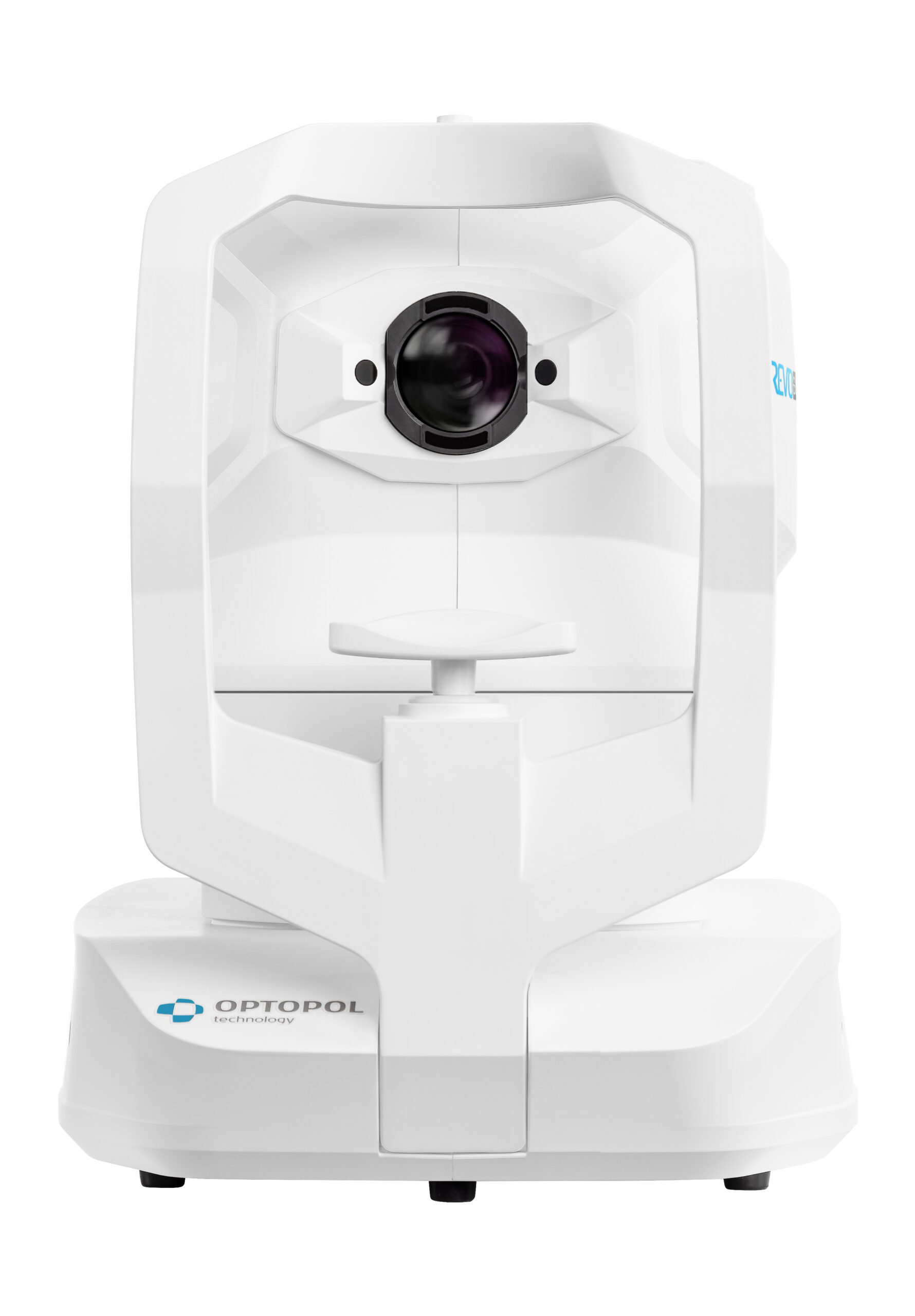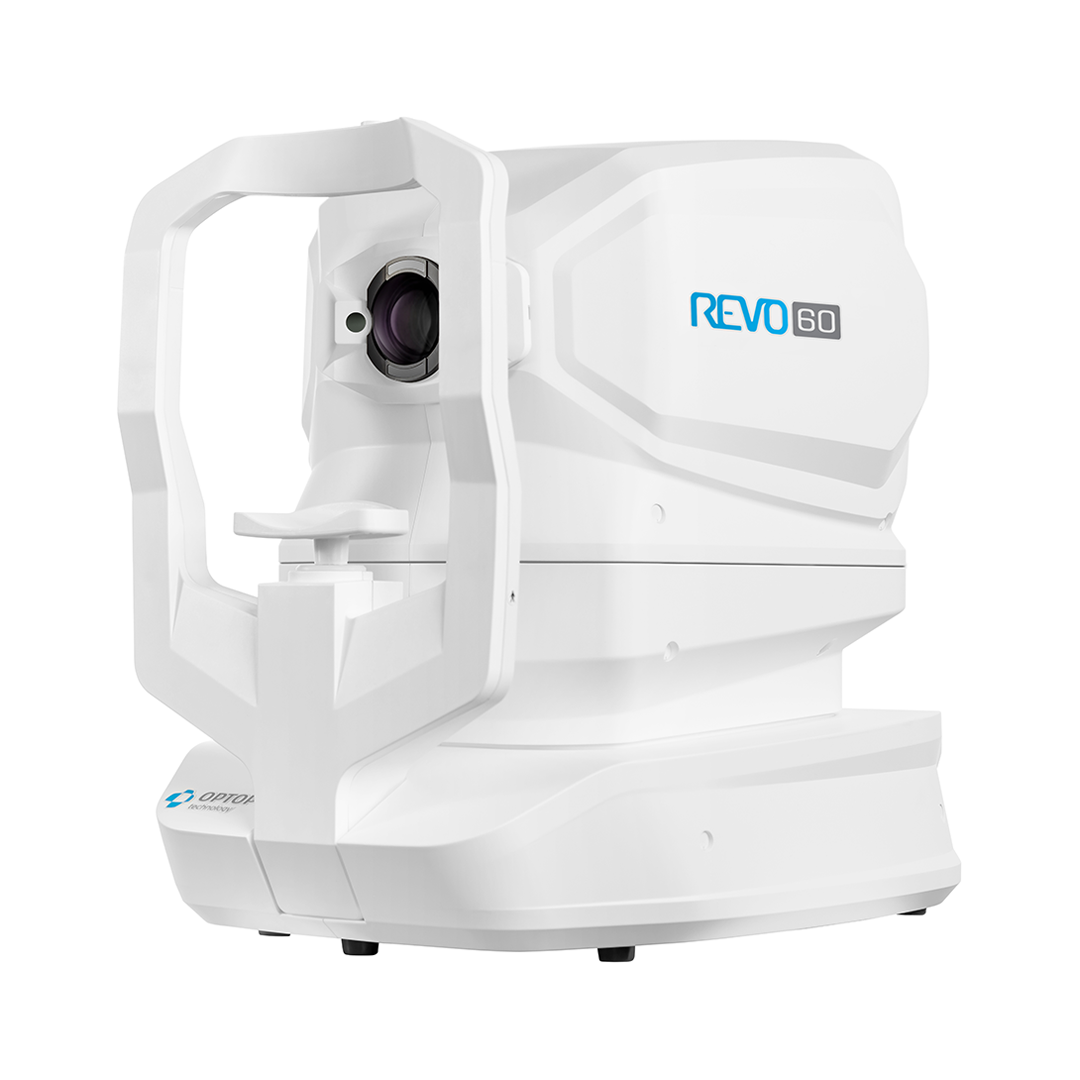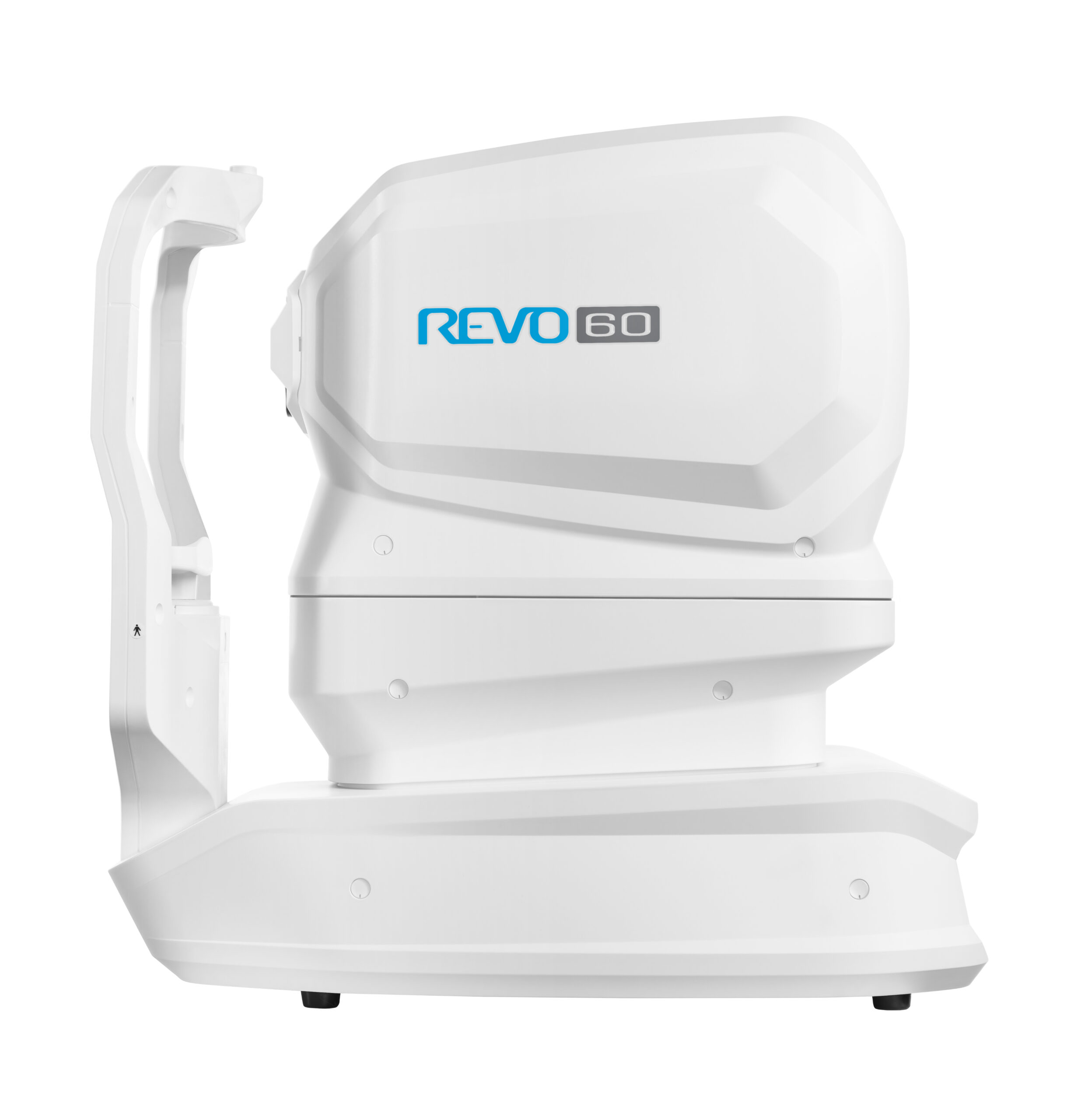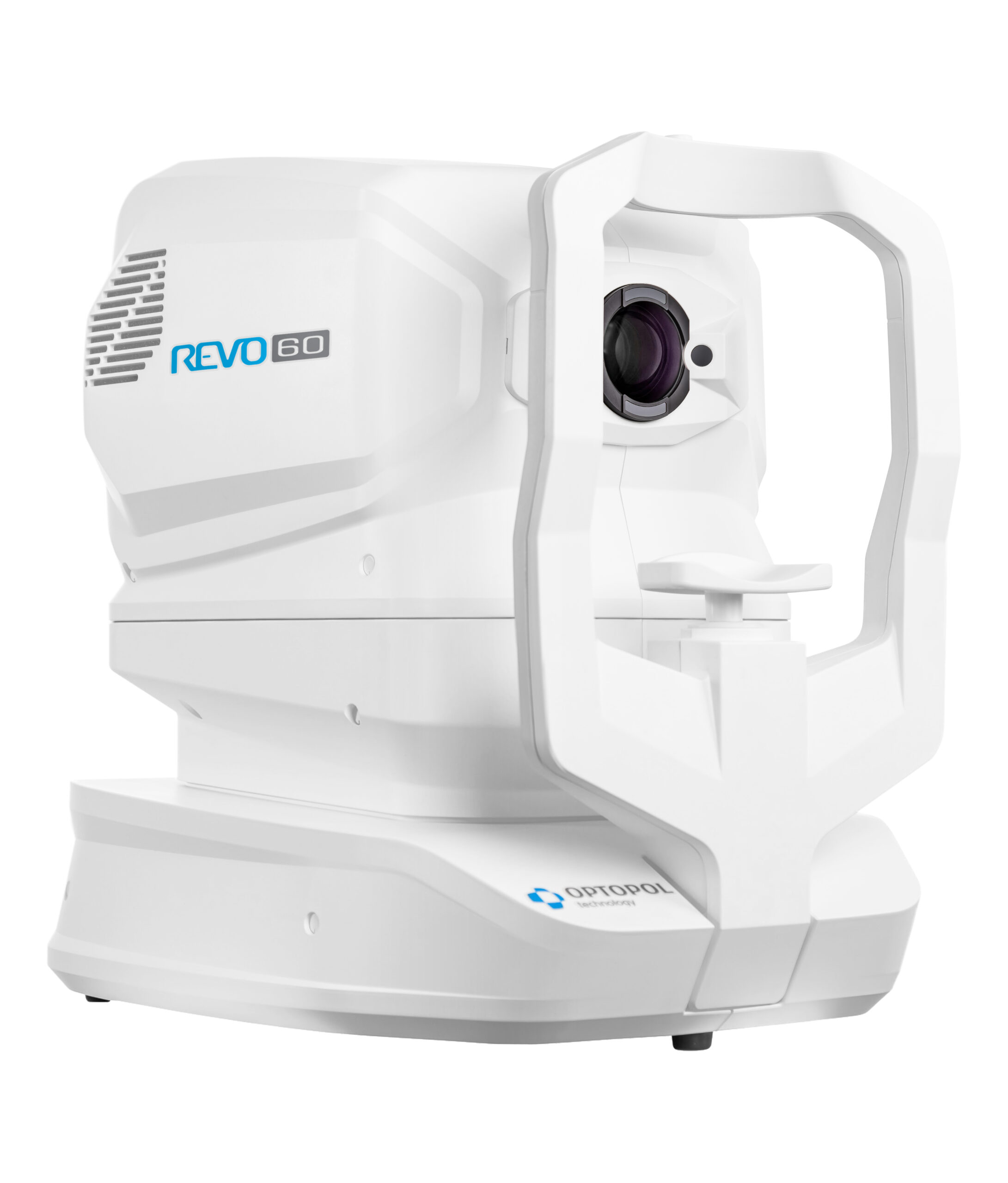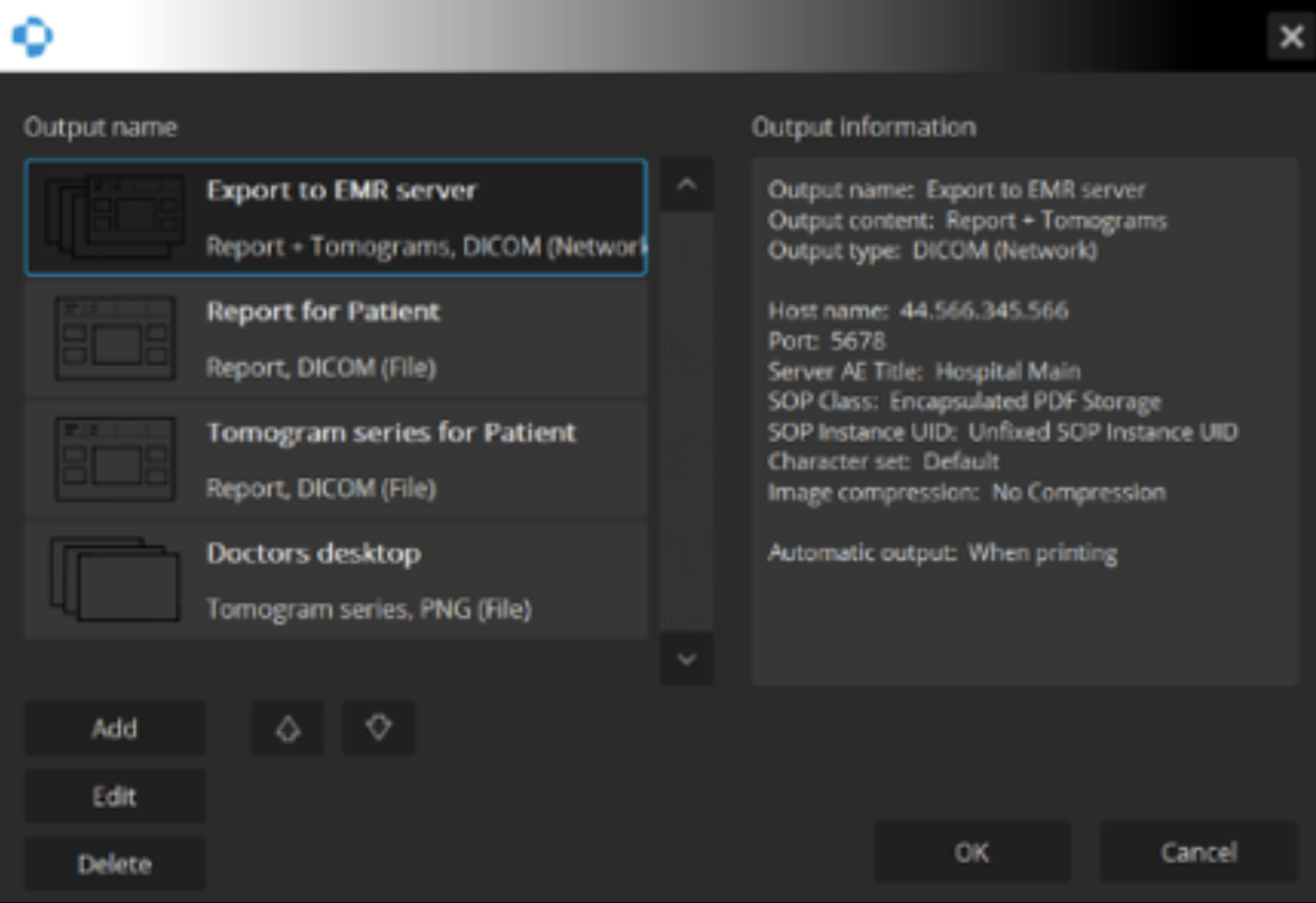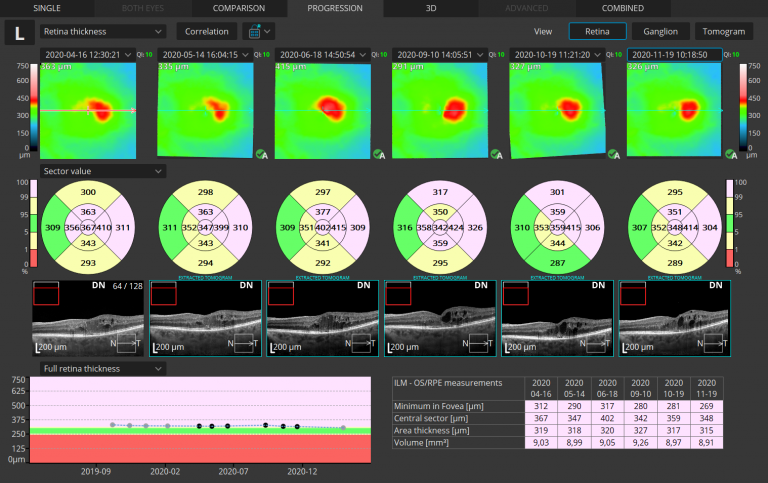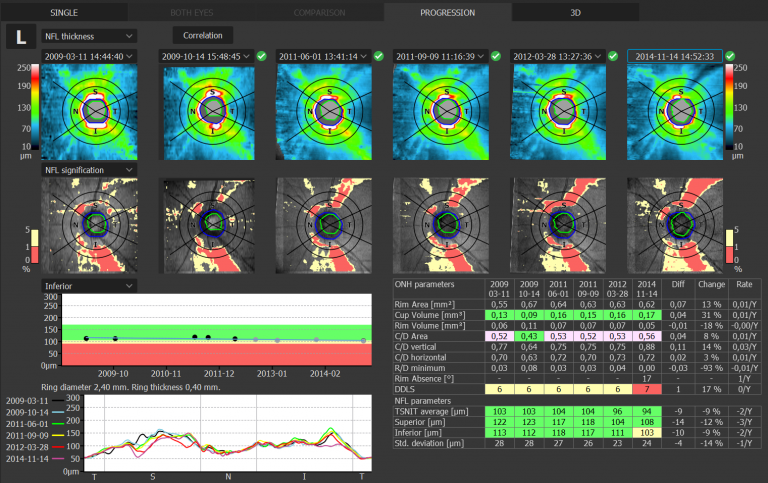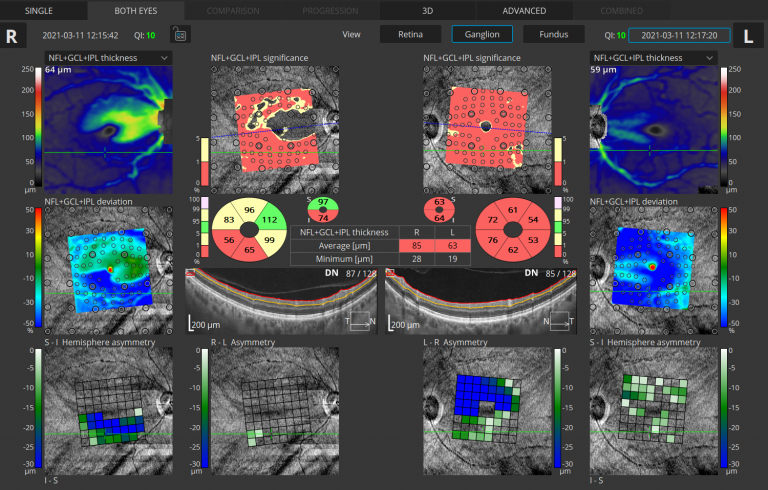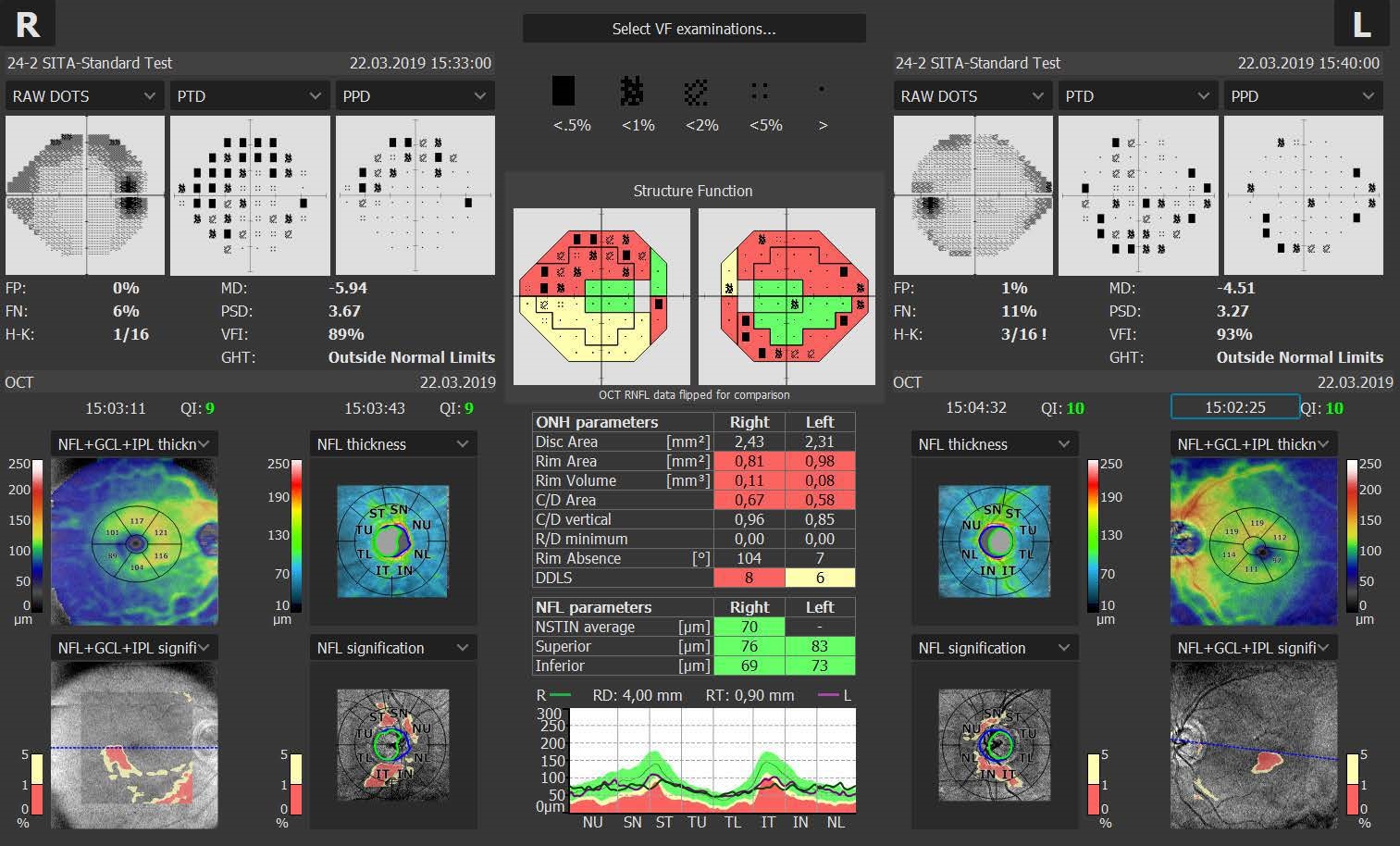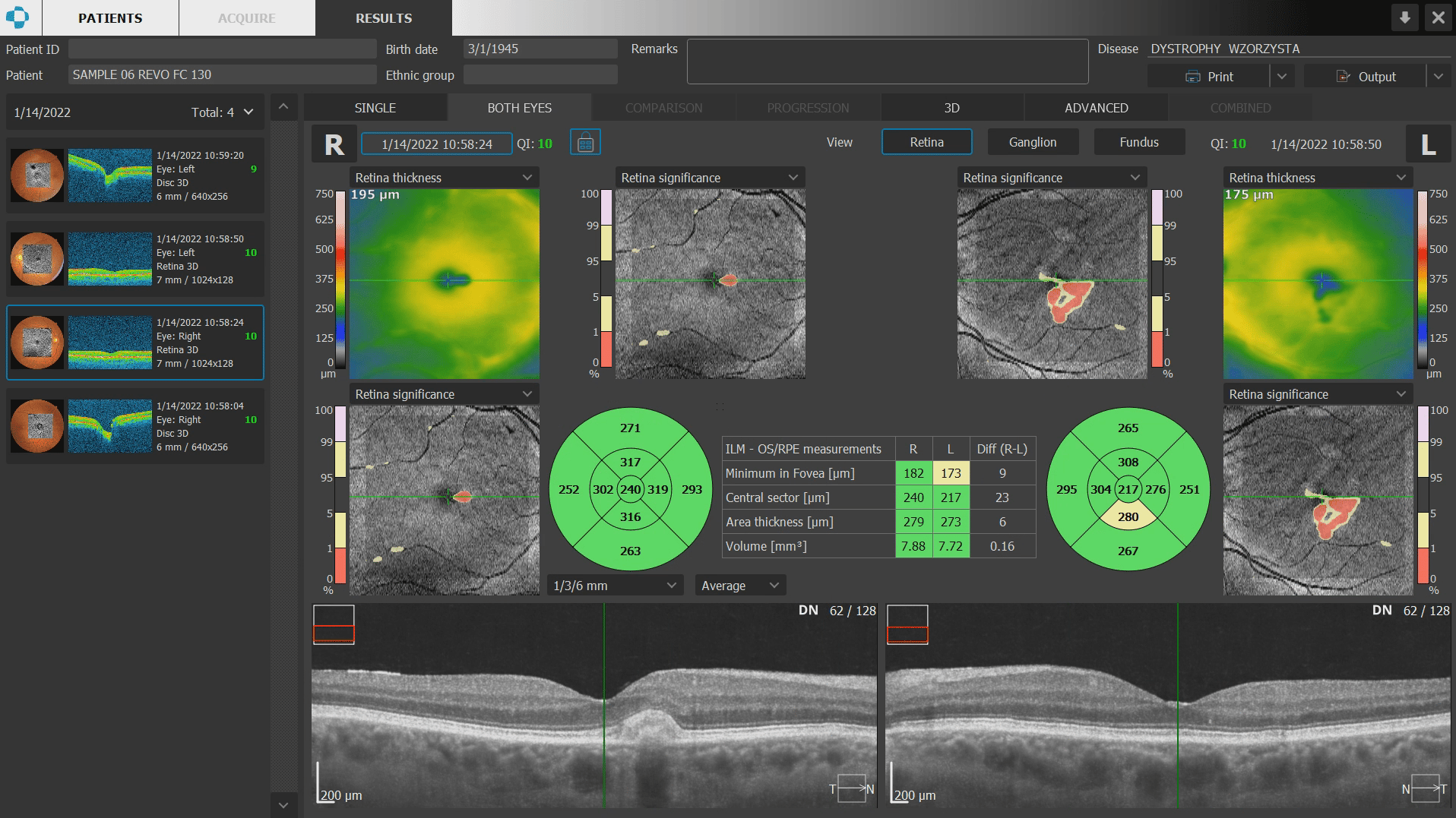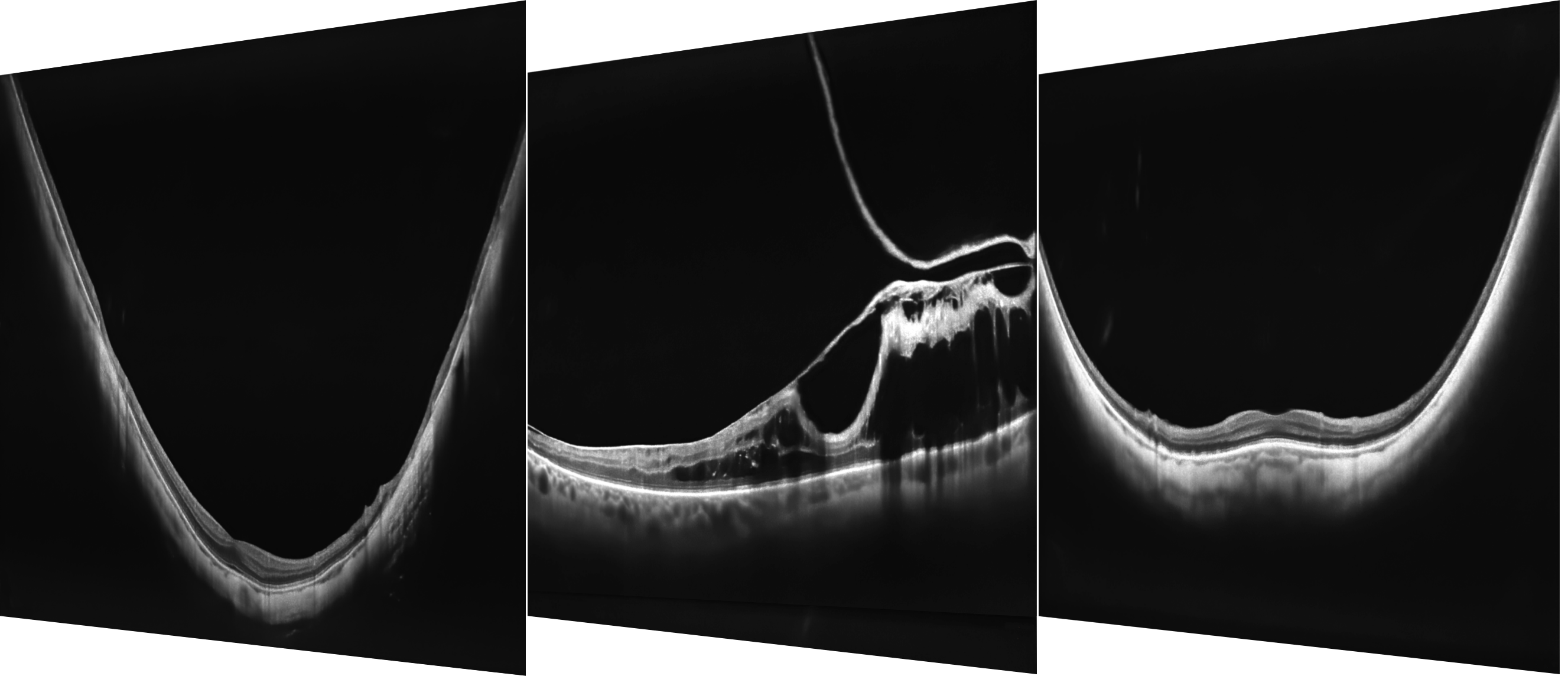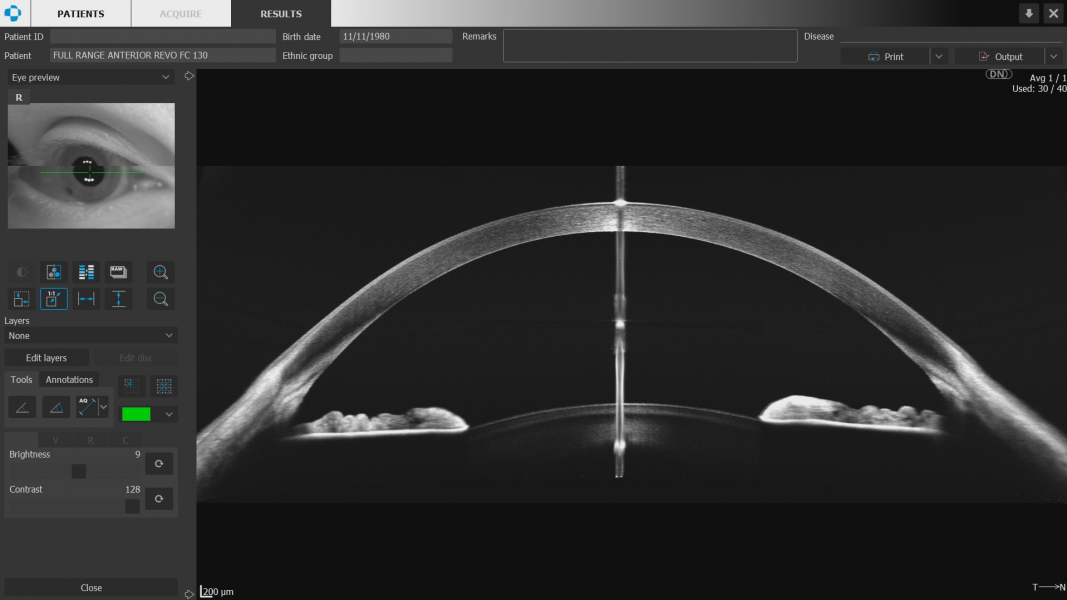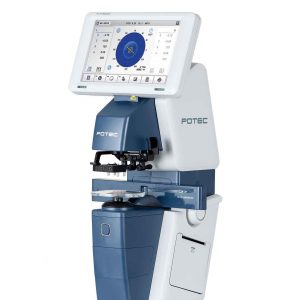Description
Spectral-Domain OCT
Fully automated capture with the push of the START button.
Moving OCT innovation forward. OPTOPOL pioneered the first Spectral Domain OCT technology 25 years ago. Our background allows us to provide an unparalleled experience to both patients and eye care professionals. Get the best of both worlds with ultra-high quality scans in an easy-to-use interface.
- Provides both Posterior and Anterior scan capabilities.
- Combine one-touch exams with preset scan combinations for streamlined workflows.
- Progression analysis is available for detailed analysis over time.
- Add-on software modules to increase the efficiency of your OCT device.
Full Range
With scans presenting New Extended DepthTM software, based on our Full Range technology, provides scans of increased depth for reliable and convenient observation of challenging cases. With scans presenting extended depth, this new imaging mode is perfect for diagnosing even highly myopic patients.
STANDARDIZE SCANS PERFORMED
Connectivity
REVO offers an excellent networking solution that allows doctors to view and manage multiple examinations from review stations in your practice. The system comes with the latest version of Windows PRO and can easily export in PDF, JPEG and DICOM formats to your network or EHR.
Additional Scan Programs
Perform high-resolution posterior and anterior segment scans
Technical Specifications
| Technology |
Spectral Domain OCT
|
| Scanning speed | 60 000 measurements per second |
| Light Source |
SLED Wavelength 850 nm
|
| Bandwidth |
50 nm half bandwidth
|
| Axial resolution | 2.8 μm digital, 5 μm in tissue |
| Transverse Resolution |
12 μm, typical 18 μm
|
| Overall scan depth |
2.8 mm / ~6 mm in Full Range mode
|
| Scan range |
Posterior 5 mm to 15 mm, Angio 3 mm to 6 mm, Anterior 3 mm to 18 mm
|
| Scan program | 3D, Angio¹, Full Range Radial, Full Range B-scan, Radial, B-scan, Raster, Cross, TOPO¹ , Biometry AL¹ |
| Fundus image |
Live Fundus Reconstruction
|
| Alignment method |
Fully automatic, Automatic, Manual
|
| Retina analysis |
Retina thickness, Inner Retinal thickness, Outer Retinal thickness, RNFL+GCL+IPL thickness, GCL+IPL thickness, RNFL thickness, RPE deformation, MZ/EZ-RPE thickness
|
| Angiography OCT¹ | Vitreous, Retina, Choroid, Superficial Plexus, RPCP, Deep Plexus, Outer Retina, Choriocapilaries, Depth Coded, SVC, DVC, ICP, DCP, Custom, Enface, FAZ, VFA, NFA, Quantification: Vessel Area Density, Skeleton Area Density, Thickness map |
| Angiography mosaic | Acquistion method: Auto, Manual Mosaic modes: 10×6 mm, Manual up to 12 images |
| Glaucoma analysis |
RNFL, ONH morphology, DDLS, OU and Hemisphere asymmetry, Ganglion analysis as RNFL+GCL+IP and GCL+IPL,
Structure + Function² |
| Anterior |
Pachymetry, Epithelium map, Stroma map, AIOP, Angle Assessment, AOD 500/750, TISA 500/750
|
| Anterior (no lens/adapter required) |
Anterior Chamber Radial, Anterior Chamber B-scan, Angle to Angle view
|
| Biometry OCT | AL, CCT, ACD, LT, P, WTW |
| IOL Calculator ³ | IOL Formulas: Hoffer Q, Holladay I, Haigis, Theoretical T, Regression II |
| Corneal Topography Map¹ | Axial [Anterior, Posterior], Refractive Power [Kerato, Anterior, Posterior, Total], Net Map, Axial True Net, Equivalent Keratometer, Elevation [Anterior, Posterior], Height, KPI (Keratoconus Prediction Index) |
| Connectivity | DICOM Storage SCU, DICOM MWL SCU, CMDL, Networking |
| Min. pupil size | 2.4 mm |
| Focus adjustment range | -25D to +25D |
| Dimensions (LxWxH) / Weight | 479 mm x 367 mm × 493 mm / 29 kg |
| Fixation target | OLED display (The target shape and position can be changed), External fixation arm |
| Power Supply / Consumption | 100 V to 240 V, 50/60 Hz / 90 VA to 110 VA |
¹ An optional software module
² via connection with PTS software version 3.4 or higher
³ The Biometry module and a separate license for the IOL Calculator are required


